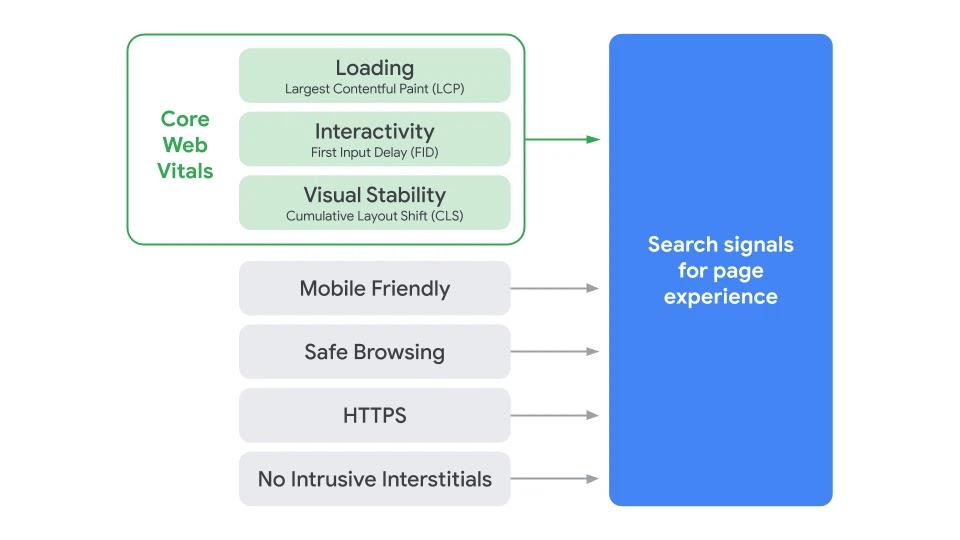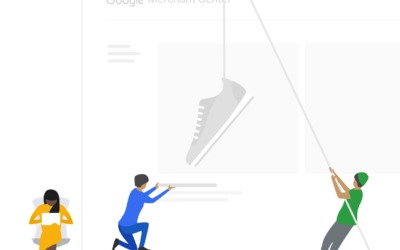What Google’s new ranking factors for 2021 mean for your business

By Ben Robson
Co-founder, GOAT
Google has taken the unusual step of introducing a new signal that it’s planning to add into its algorithm, coming in 2021. We explain what it is, how it will effect your website, and how to ensure you are ready for it.
Back in May 2020, Google introduced us to Web Vitals in its Chromium Blog post. The post introduced the Web Vitals program as an initiative by Google to help business owners, marketers and developers gain clarity and consistency in how to ensure their website offers the best possible experience to its customers.
Today we are introducing a new program, Web Vitals, an initiative by Google to provide unified guidance for quality signals that, we believe, are essential to delivering a great user experience on the web.
Core Web Vitals uses a set of three core signals believed to be critical to all web experiences:
Largest Contentful Paint (LCP) measures perceived load speed and marks the point in the page load timeline when the page’s main content has likely loaded.
This is a useful metric, as it corresponds closely to what a user sees on their screen and gives the user a feeling of whether a page has loaded or not. Metrics like First Contentful Paint (FCP) only capture the very beginning of the loading experience.
First Input Delay (FID) measures responsiveness and quantifies the experience users feel when trying to first interact with the page.
FID measures the time from when a user first interacts with a page (i.e. when they click a link, tap on a button, or use a custom JavaScript-powered control) to the time when the browser is actually able to begin processing event handlers in response to that interaction.
Cumulative Layout Shift (CLS) measures visual stability and quantifies the amount of unexpected layout shift of visible page content.
In simple terms, this is unexpected movement of page content. You are most likely to have experienced this on mobile devices when without warning, the text on a page moves and you’ve lost your place, or you’re about to tap a link or a button, but in the instant before your finger lands the link moves, and you end up clicking something else.
Google has ensured all of these core metrics are measurable with the goal being to make Core Web Vitals:
Simple and easy to access and measure, for all site owners and developers, both across Google surfaces as well as within their own dashboards and tools.
Google plans to combine the signals derived from Core Web Vitals with their existing search signals for page experience, including mobile-friendliness, safe-browsing, HTTPS-security, and intrusive interstitial guidelines, to provide a holistic picture of page experience.
Google also plans to incorporate more page experience signals on a yearly basis, to align with ever-evolving user expectations.
Page experience ranking
Google wants to offer its users the best possible experience by serving up websites in its listings that offer great page experiences. This should be the aim of your web pages, after all, a bad page experience could stand in the way of a person being able to find the valuable information on a page and, ultimately, buy your products or services.
By adding page experience to the hundreds of existing signals that Google considers when ranking search results, it aims to help website owners make the web better for everyone.
What to do now, how to improve your Core Web Vitals
If you are unsure if your website is offering a less than satisfactory user experience, or just don’t know where to start, you’re in luck, as Google has created a number of tools to help audit your webpages and point you in the direction of resources to improve.
Whilst the tools help you get the insights you need, you may sometimes struggle to fully make sense of what it all means.
- Lighthouse in DevTools is now at version 6.0
- PageSpeed Insights incorporates the new metrics
- New Chrome User Experience Report API lets you access up to 28 days of historical data for your URLs
- Experience section in DevTools Performance panel to identify Cumulative Layout Shift (CLS) on your pages
- Search Console’s new Core Web Vitals report for a summary of how your site performs
- Web Vitals Chrome Extension for quick access to metrics from the browser
- Web.dev Measure See how well your website performs, then, get tips to improve your user experience.
If your website is offering a less than satisfactory user experience, (and you probably have a pretty good idea if it is or not), now is the time to make fixing it a business priority.
If you don’t do anything, you may start to see competing businesses that do take part of your market share.
Is your website ready to perform well from a Core Web Vitals standpoint? Let us know in the comments below.
Thanks for reading!
Keep reading?
SEO Basics – building the foundations to attract your target audience in search
SEO 101 – Some key elements to work on to get your site in a good position to perform well in Search Engines
Google helps the individual in the fight against climate breakdown
Google announces a number of innovations to help the individual do a bit more in the fight against climate change.
How to get your products displayed in Google Shopping, Search and Google Images, for free
Get your products displayed in Google Shopping, Search and Google Images, for free







